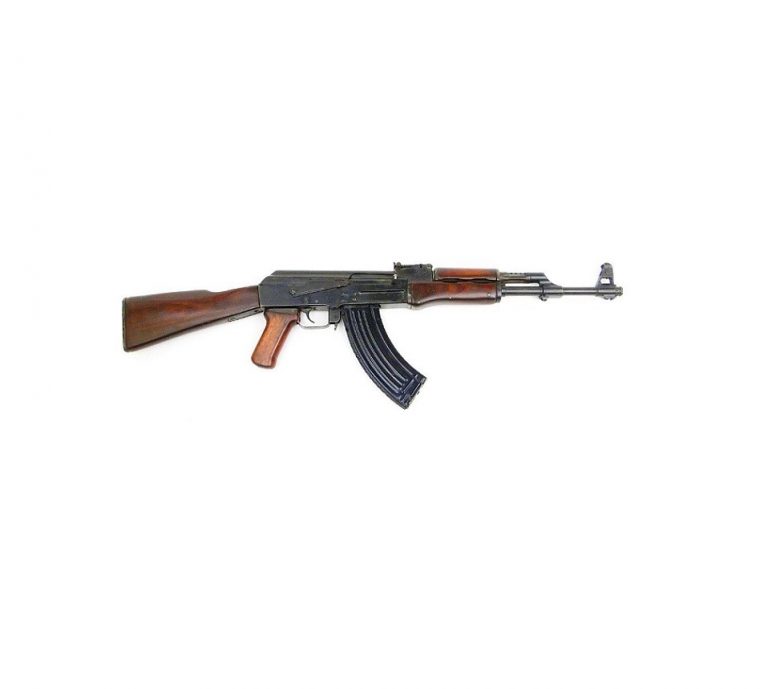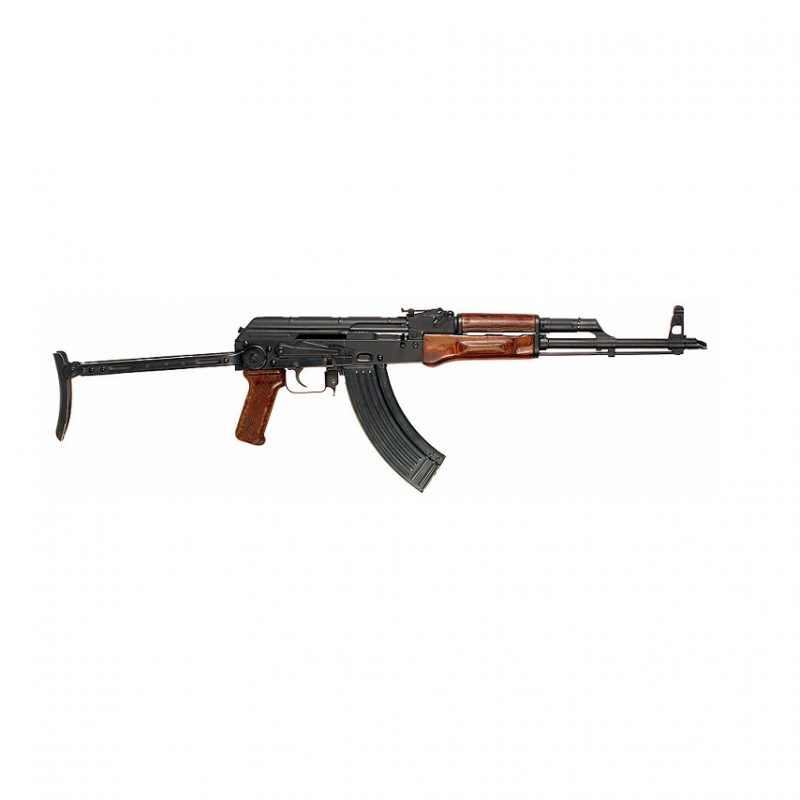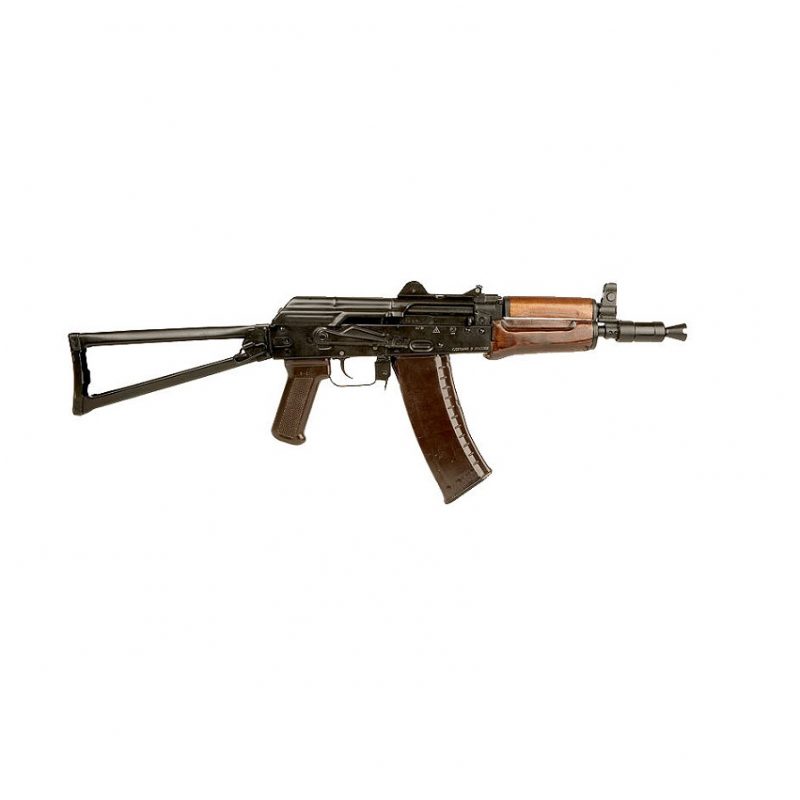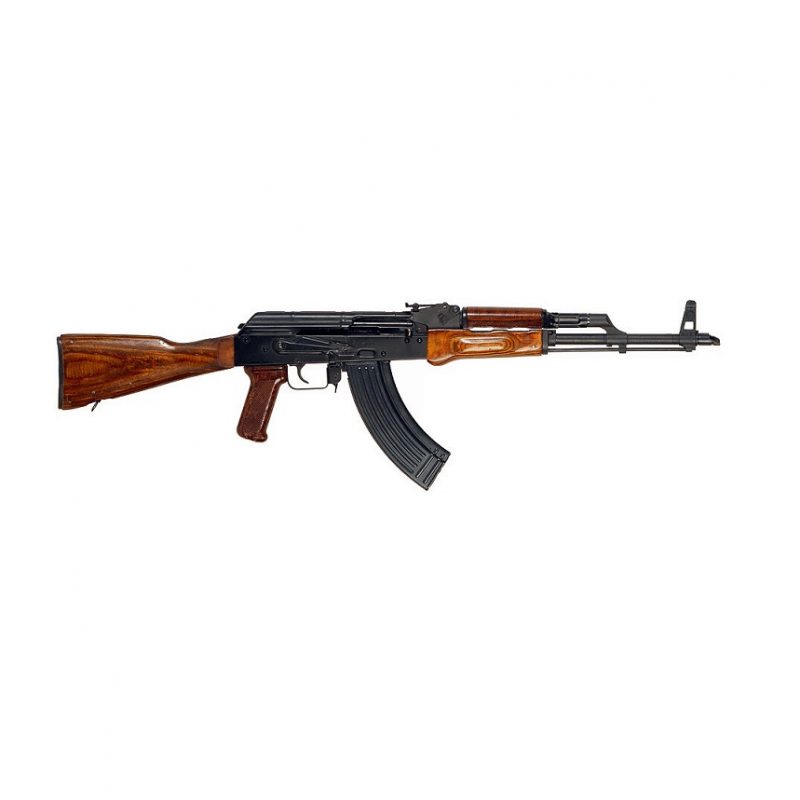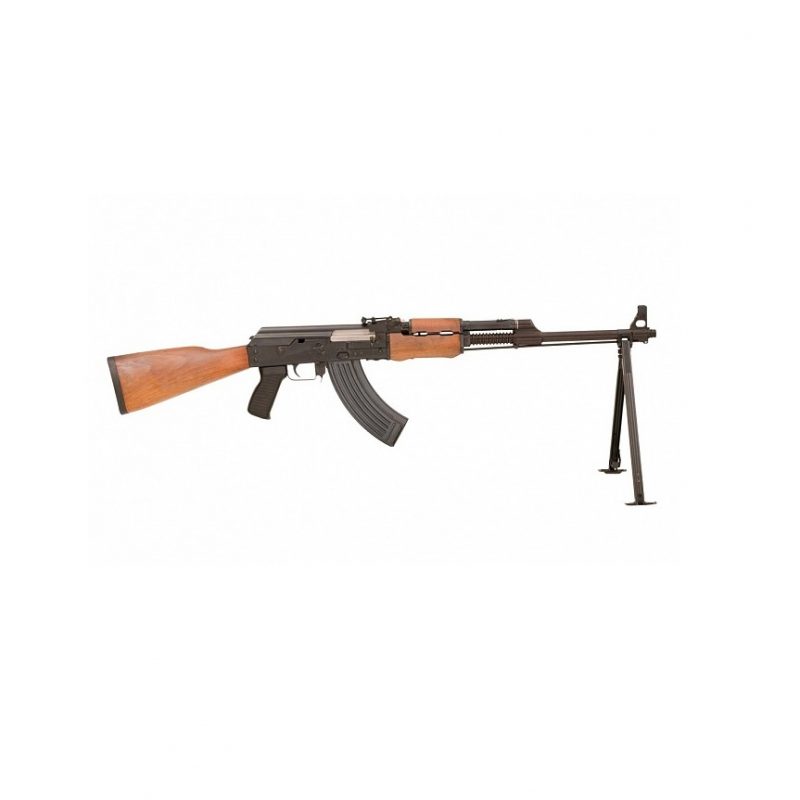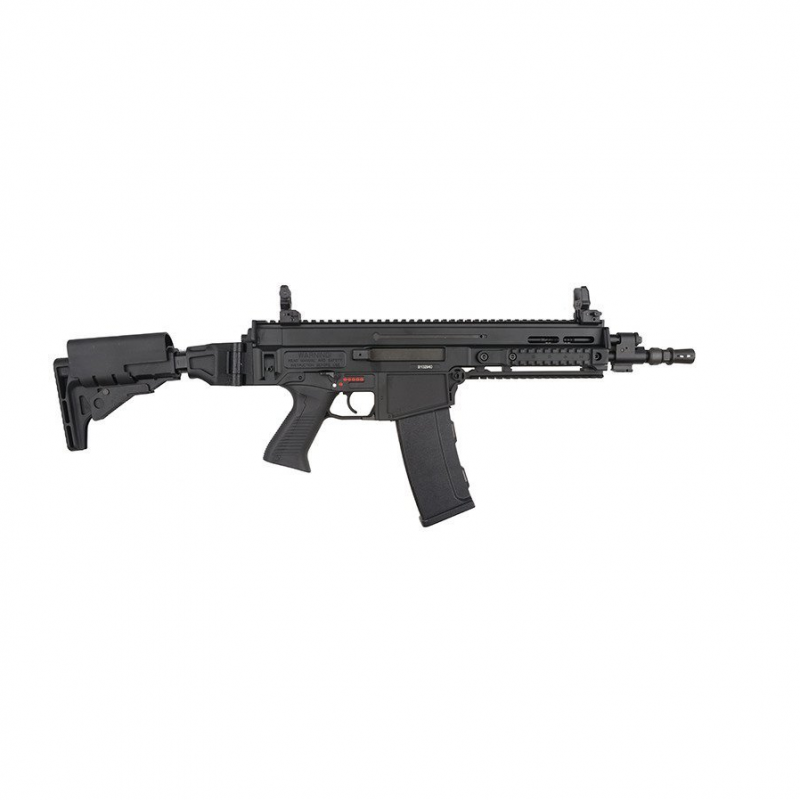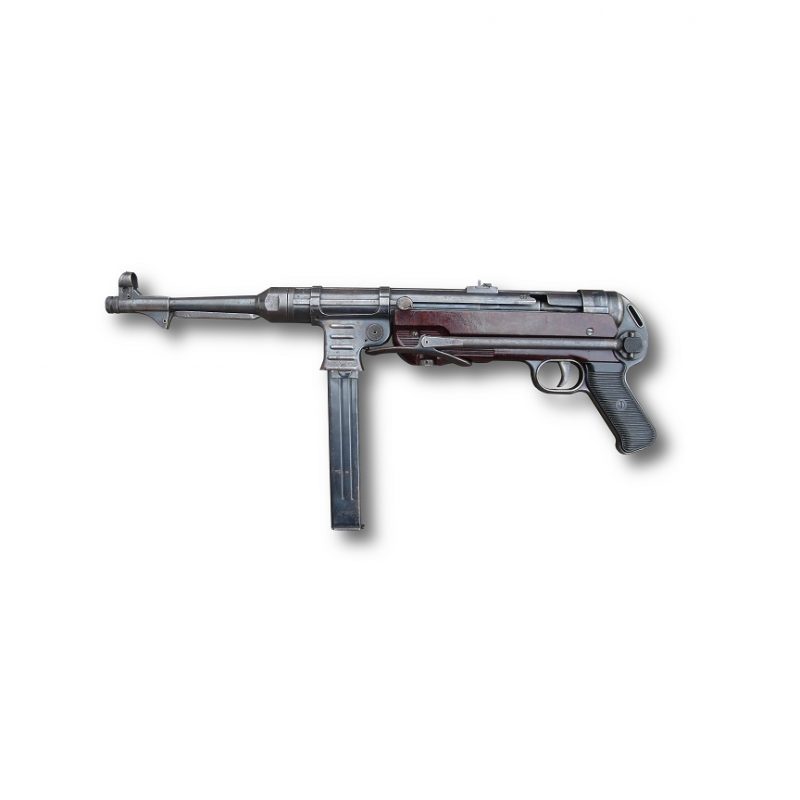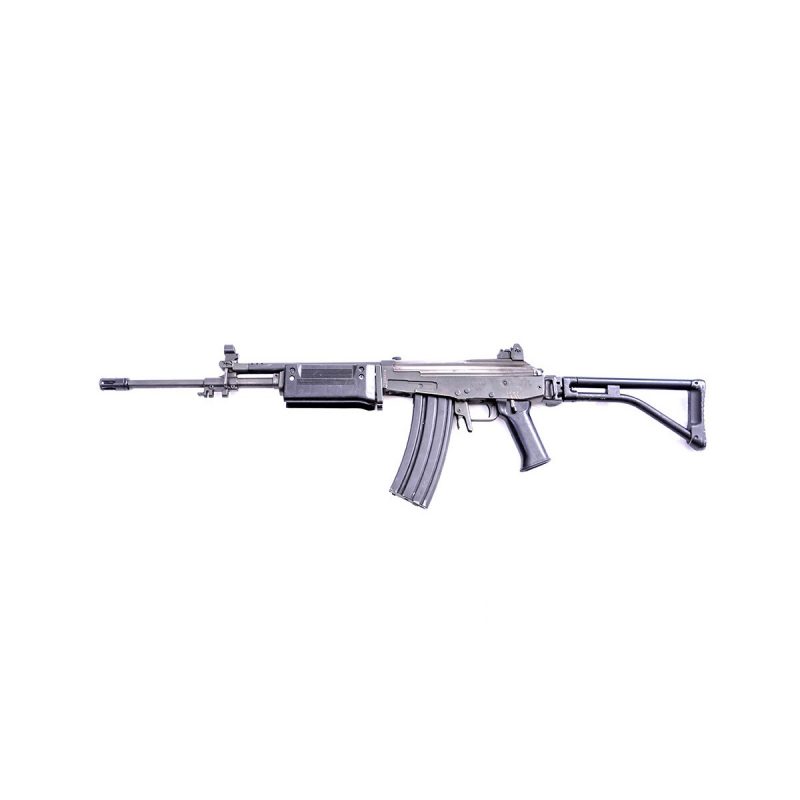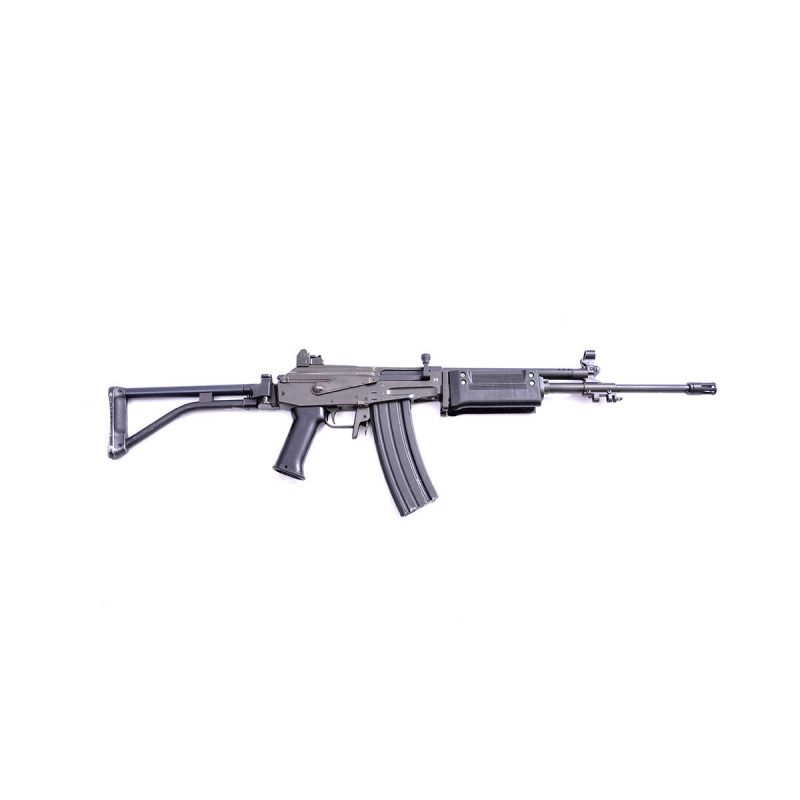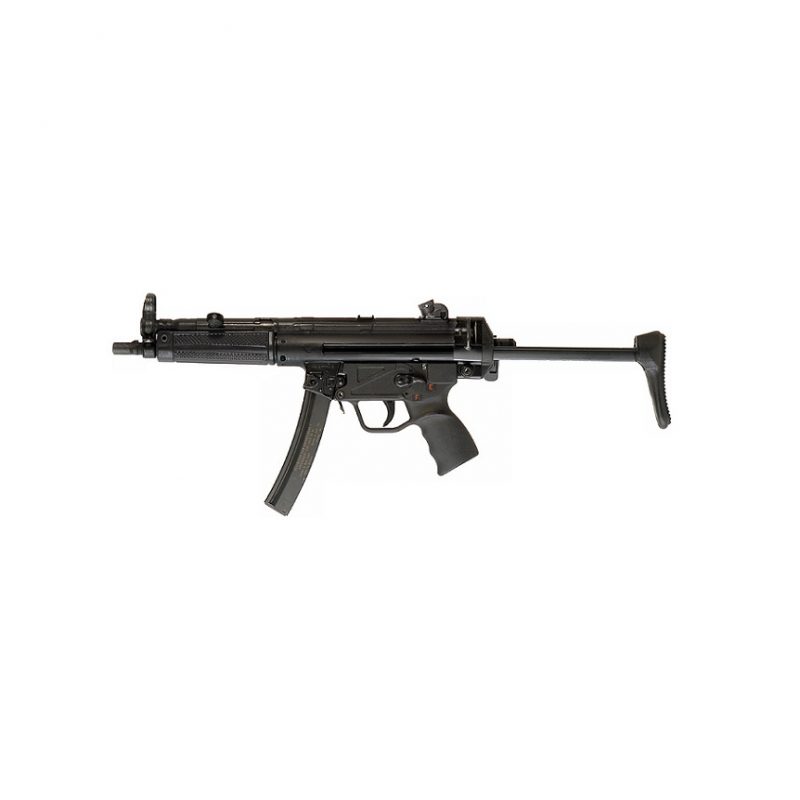Description
The Kalashnikov family of weapons was the creation of Russian Mikhail Kalashnikov towards the end of World War Two. Although often disputed by the Soviet Union during the Cold War, the original AK-47 design was heavily influenced by the German Sturmgewehr MP/StG 44.
The general military issue of a fully automatic rifle that could hold 30 rounds of a powerful 7.62×39mm cartridge, was a major technological achievement for the Soviets and of great concern to the West, who at this point in time were still using antiquated bolt action and semi-automatic rifles.
Although it successfully passed army trials in 1949, initial problems with the production of its sheet metal receiver required a design rethink and eventually they switched to a milled machine alternative in 1951. This sped up production times by utilizing machine plants and operators that had previously been used in producing the older Mosin Nagant rifle. However this initial teething problem lead to a delay in its large scale general issue to the military, which didn’t occur until 1956.
It has its own small family of variants, the most common being the AKS-47. Which is fitted with folding metal stock, similar in appearance to that used on the German wartime MP40, which folds under the weapon, with a rotating buttplate. This was predominantly issued to special forces, paratroopers and vehicle crews. The other variant was the AKSN, which gives the user the ability to fit a night vision sight by way of a side mounted rail.
Like all weapons within the Kalashnikov family, the AK-47 has seen extensive use since its introduction. Not only by Russia and it’s old Warsaw Pact allies, but also by scores of African/Middle Eastern nations, irregular forces, criminal organizations/cartels and terrorist groups from the IRA to ISIS.
Designer: Mikhail Kalashnikov
Designed: 1946-48
Manufacturer: Kalashnikov Concern and many others under license
Produced: 1948-Present
